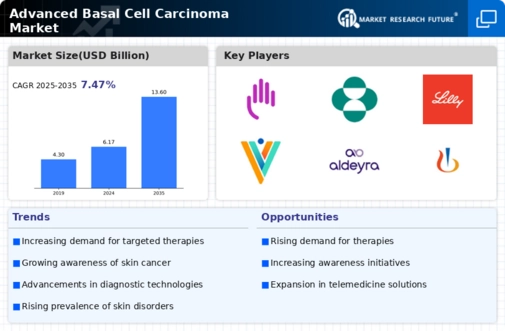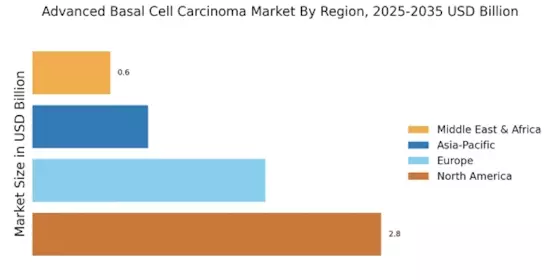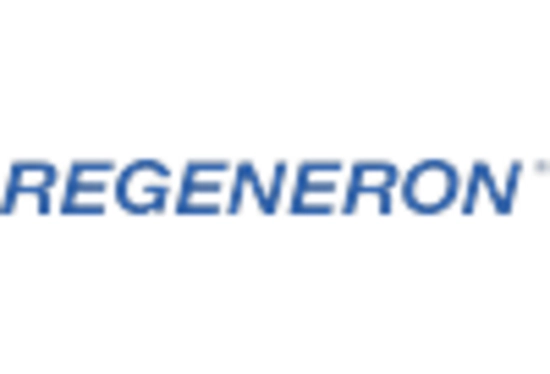Advancements in Diagnostic Techniques
The evolution of diagnostic techniques plays a crucial role in shaping the Advanced Basal Cell Carcinoma Market. Enhanced imaging technologies, such as dermoscopy and reflectance confocal microscopy, have significantly improved the accuracy of basal cell carcinoma diagnoses. These advancements facilitate earlier detection of advanced cases, which is essential for effective treatment. Moreover, the integration of artificial intelligence in diagnostic processes is emerging, potentially streamlining the identification of skin lesions. As healthcare professionals increasingly adopt these sophisticated diagnostic tools, the market for advanced basal cell carcinoma treatments is likely to expand, driven by the need for timely and precise interventions.
Growing Investment in Oncology Research
The surge in investment directed towards oncology research is a notable driver for the Advanced Basal Cell Carcinoma Market. Pharmaceutical companies and research institutions are allocating substantial resources to develop novel therapies and treatment modalities for advanced basal cell carcinoma. This trend is underscored by the increasing number of clinical trials aimed at evaluating new drug candidates and combination therapies. In recent years, the oncology sector has witnessed a significant influx of funding, with billions of dollars being invested annually. Such financial commitment not only accelerates the pace of innovation but also enhances the availability of advanced treatment options, thereby fostering growth within the Advanced Basal Cell Carcinoma Market.
Regulatory Support for Innovative Therapies
Regulatory bodies are increasingly supportive of innovative therapies, which serves as a vital driver for the Advanced Basal Cell Carcinoma Market. The expedited approval processes for breakthrough therapies and orphan drugs have encouraged pharmaceutical companies to invest in the development of advanced treatments. This regulatory environment fosters a landscape where novel therapies can reach the market more swiftly, addressing the urgent needs of patients with advanced basal cell carcinoma. As a result, the availability of cutting-edge treatment options is likely to increase, further stimulating growth in the Advanced Basal Cell Carcinoma Market.
Rising Demand for Minimally Invasive Treatments
The growing preference for minimally invasive treatments is significantly influencing the Advanced Basal Cell Carcinoma Market. Patients are increasingly seeking options that offer reduced recovery times and lower risks of complications. Techniques such as Mohs micrographic surgery and topical therapies are gaining traction due to their effectiveness and patient-friendly nature. This shift in patient preferences is prompting healthcare providers to adapt their treatment protocols, thereby expanding the market for advanced basal cell carcinoma therapies. As the demand for less invasive options continues to rise, the Advanced Basal Cell Carcinoma Market is poised for substantial growth.
Increasing Incidence of Advanced Basal Cell Carcinoma
The rising incidence of advanced basal cell carcinoma is a pivotal driver for the Advanced Basal Cell Carcinoma Market. Data indicates that the prevalence of skin cancers, particularly basal cell carcinoma, has been on the rise, with estimates suggesting that over 4 million cases are diagnosed annually in the United States alone. This increase can be attributed to factors such as prolonged sun exposure, tanning bed usage, and an aging population. As more individuals are diagnosed with advanced stages of this cancer, the demand for effective treatment options escalates. Consequently, pharmaceutical companies and healthcare providers are compelled to innovate and expand their offerings, thereby propelling the growth of the Advanced Basal Cell Carcinoma Market.


















Leave a Comment